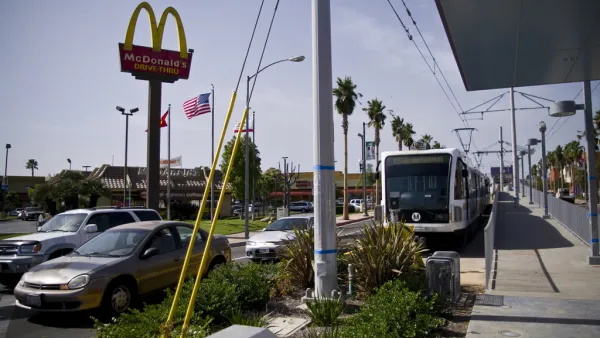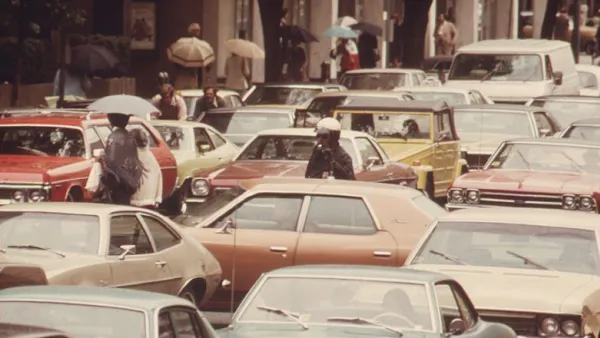Passenger vehicle ownership and vehicle miles traveled per person and per household remain below their historic peaks set in 2006 and 2004, respectively, but they have been on the upswing for the past four to five years, according to new data.

University of Michigan transportation researcher Michael Sivak released his 10th "peak motorization" report last month [see abstract (pdf)] in a series that began June 2013. Sivak, who founded and directs Sustainable Worldwide Transportation at the University of Michigan Transportation Institute (UMTRI), focuses on two aspects of "peak car:" changes in ownership of passenger vehicles and distance driven, or vehicle miles traveled (VMT).
Both are measured as rates, per person and per household, as opposed to total VMT, which the Federal Highway Administration reports monthly in Traffic Volume Trends. The period examined was 1984 to 2016.
- Auto ownership per person measured 0.766 in 2016, highest since 2008. Measured per household, it was 1.968, highest since 2009. [Peaks for both rates were set in 2006]
- VMT per person was 8,819 miles, highest since 2007. Measured per household, it was 22,649 miles, also highest since 2007. [Peaks for both rates set in 2004]
Southern California comparison
According to research released last month by the UCLA-Institute of Transportation Studies on causes for the decline in public transit ridership in Southern California, increased auto ownership was the primary reason.
Between 2000 and 2015, private vehicle ownership dramatically increased among households in the Southern California Association of Governments region, from 1.7 to 2.4 vehicles per household.
Contrast those nationwide rates provided by Dr. Sivak: 2.031 vehicles per HH in 2000 to 1.950 per HH in 2015. The UMTRI data would appear to more than verify the findings of UCLA-ITS in pointing to increased car ownership as the primary reason for the decline in transit ridership in Southern California.
FULL STORY: On the road again: Vehicle ownership, miles driven continue to rise

Analysis: Cybertruck Fatality Rate Far Exceeds That of Ford Pinto
The Tesla Cybertruck was recalled seven times last year.

National Parks Layoffs Will Cause Communities to Lose Billions
Thousands of essential park workers were laid off this week, just before the busy spring break season.

Retro-silient?: America’s First “Eco-burb,” The Woodlands Turns 50
A master-planned community north of Houston offers lessons on green infrastructure and resilient design, but falls short of its founder’s lofty affordability and walkability goals.

Test News Post 1
This is a summary

Analysis: Cybertruck Fatality Rate Far Exceeds That of Ford Pinto
The Tesla Cybertruck was recalled seven times last year.

Test News Headline 46
Test for the image on the front page.
Urban Design for Planners 1: Software Tools
This six-course series explores essential urban design concepts using open source software and equips planners with the tools they need to participate fully in the urban design process.
Planning for Universal Design
Learn the tools for implementing Universal Design in planning regulations.
EMC Planning Group, Inc.
Planetizen
Planetizen
Mpact (formerly Rail~Volution)
Great Falls Development Authority, Inc.
HUDs Office of Policy Development and Research
NYU Wagner Graduate School of Public Service



























